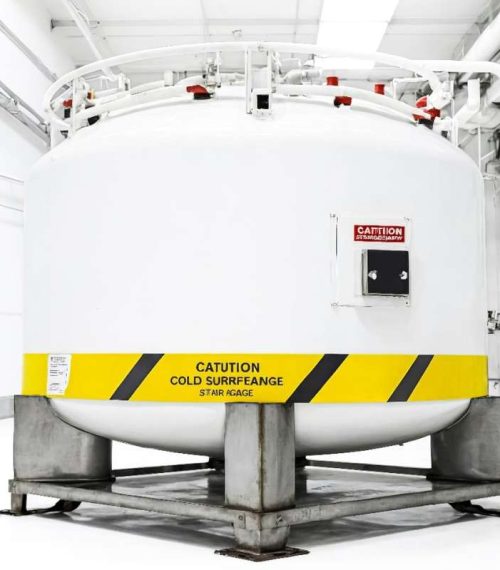
Chemical Process Tank Malaysia
Premium Chemical Process Tank
When it comes to safe chemical handling in a facility’s daily operations, Chemical Process Tanks play a critical role. Widely adopted in Malaysia and abroad, our tanks support diverse industries such as petrochemicals, pharmaceuticals, water treatment, food processing, and manufacturing. Chemical process tanks are designed to store, mix and process chemicals. They help maintain operational efficiency while adhering to strict safety and environmental regulations.
Key Considerations for Safe & Efficient Operations
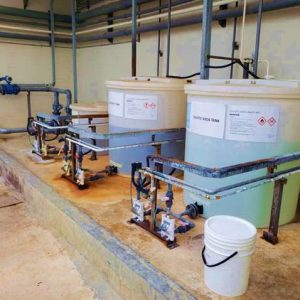
Leak & spill prevention is a critical priority in chemical process tank operations. The tanks are typically designed with secondary containment systems, normally bund walls (dikes), designed to hold more than the tank’s maximum capacity. This containment structure acts as a crucial safety barrier, preventing hazardous chemical spills from contaminating the environment or posing risks to personnel. In Malaysia, where heavy rainfall and high humidity are common, proper bunding also prevents rainwater accumulation and chemical overflow.
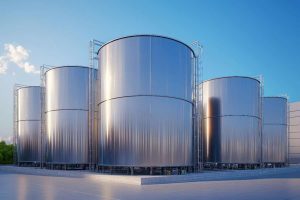
Material Compatibility is another essential factor in tank selection. The construction material must be carefully chosen based on the chemical properties of the stored substances, including corrosiveness, temperature, pressure, and reactivity. For instance, stainless steel (SS316) is ideal for acidic or high-purity applications, while polyethylene (HDPE) tanks are suitable for aggressive solvents. Using incompatible materials can lead to tank degradation, leaks, or even catastrophic failures, thus making proper selection crucial for long-term safety and risk management.
It’s imperative to carry out regular inspection and testing to ensure long-term reliability of your chemical process tank. Various techniques are employed to detect corrosion, cracks, or structural weaknesses before they escalate into major hazards. In Malaysia’s demanding industrial environments, scheduled maintenance and testing are crucial for compliance and operational continuity.
Finally, compliance with Malaysian regulations is non-negotiable. Chemical process tanks must meet local standards set by relevant agencies. Additionally, adherence to international standards ensures that chemical process tanks are designed, fabricated, and maintained to the highest safety benchmarks. Failure to comply can result in legal penalties, operational shutdowns, or severe environmental incidents, making regulatory compliance a top priority for industries in Malaysia.
Tank Design & Structural Considerations
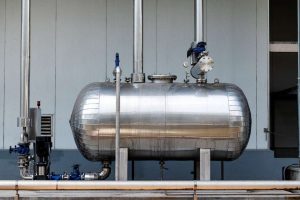
The structural integrity of chemical process tanks primarily depends on precise engineering and material selection. Material and thickness of the tanks are carefully chosen based on the stored chemical’s properties. Corrosiveness, temperature sensitivity, and pressure requirements dictate whether carbon steel, stainless steel (SS304/SS316), or in some cases specialized alloys are used.
For instance, hydrochloric acid storage demands rubber-lined steel or HDPE tanks, while high-temperature processes may require pressure-rated alloy vessels. Wall thickness calculations must account for hoop stress from internal pressure while ensuring resistance to corrosion over decades of service. Even minor miscalculations can lead to catastrophic failures, making material science a cornerstone of safe tank design.
Load analysis is equally critical. In this regard, chemical process tanks must withstand not just their contents but also environmental and operational stresses. Engineers must evaluate wind loads that could topple unanchored tanks, seismic forces that induce dangerous liquid sloshing, and even vacuum scenarios that could collapse thin-walled structures. Thermal stress from fluctuating temperatures can warp welds, while differential settlement of foundations may twist tank shells.
A well-designed tank isn’t just strong, it’s resilient in unforeseen operational scenarios. Among the most dangerous failure modes are seismic and buckling risks, particularly for large storage tanks. During earthquakes, the combination of ground motion and liquid inertia can trigger “elephant foot bulge” (a crushing collapse near the base) or diamond-pattern buckling along the shell. For industries in seismically active regions, retrofitting vulnerable tanks is a safety imperative.
Key Safety Risks & Mitigation
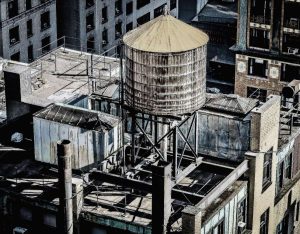
Lightning hazards pose a stealthy yet deadly threat, especially for floating-roof tanks. Modern mitigation includes shunt conductors to dissipate static, flame arrestors on vents, and enhanced grounding grids. Yet, compliance with basic lightning protection standards isn’t enough. Facilities in storm-prone areas must adopt exceeding measures, such as continuous vapor monitoring and pressurized seal systems.
Human error remains the Achilles’ heel of tank safety. Overfilling accounts for 40% of tank accidents, often due to failed level alarms or complacency during transfers. There is a need for independent high-level switches and automated shutdown systems. In addition, corrosion and structural degradation are silent killers, with tank bottoms and welds being prime failure points. Ultimately, proactive inspection isn’t just regulatory, it’s a moral duty to workers and communities.
Final thoughts
Tank safety isn’t about ticking boxes, it’s about anticipating the unimaginable. When tanks fail, the consequences are measured in life and operations impacted, ecosystems, and huge financial losses. The question isn’t if your chemical process tanks are at risk; it’s what you’re doing today to make them safer.
Ready to audit your tank safety protocols? Partner with experts who anticipate failures before they occur.
Looking for high-quality chemical process tanks in Malaysia? Cubictech delivers reliable solutions tailored for a wide range of industrial applications. Contact us today for a customized quote!
Related Articles
- Chemical Dosing Skid And Manifold Malaysia
- Chemical Process Tank Malaysia
- Commercial Reverse Osmosis System Malaysia
- Commercial Wastewater Systems Malaysia
- Commercial Water Treatment System Malaysia
- Factory Waste Treatment Malaysia
- Gas Chlorination Systems Malaysia
- Industrial Effluent Treatment System (IETS) Malaysia
- Industrial Filter And Screens Malaysia
- Industrial Wastewater Solution / Systems Malaysia
- Industrial Water Purification Systems Malaysia
- Johnson Wedge Filter (Customized Filter) Malaysia
- Sewage System Malaysia
- UV Industrial Water Treatment Malaysia
-
- Well Filtration System Malaysia
- COB BOD Reduction Parameter Malaysia
- Department Of Environmental (DOE) Water Standard Submission Malaysia
- Industrial Water Treatment Malaysia
- Wastewater Engineering and Construction Malaysia
- Wastewater Management Plant Malaysia
- Water Treatment and Recycling Malaysia
- Effluent Treatment Plant Malaysia
- Heavy Metal Water Treatment Malaysia
- Industrial Reverse Osmosis System Malaysia
- Industrial Ultrafiltration (UF) System Malaysia
- Industrial Wastewater Treatment Malaysia
- Industrial Water Filters Malaysia
- Municipal Water Treatment System Malaysia
- POME Treatment Malaysia
- Portable Container Treatment System Malaysia
- Residential Water Treatment Malaysia
- Sealless Magnetic Drive Pump Malaysia
- Sewage Treatment Plant Malaysia
- Titanium Water Filter Cartridge Malaysia
- Water Treatment Automation Dosing System Malaysia
- Piping Tank Fabrication Installation Works Malaysia
- Wastewater and Water Treatment Design and Build Malaysia
- Wastewater Treatment Plant Design / Build / Commissioning Malaysia
- Wastewater Treatment Process Instruments Malaysia
- Water & Wastewater Treatment Malaysia
